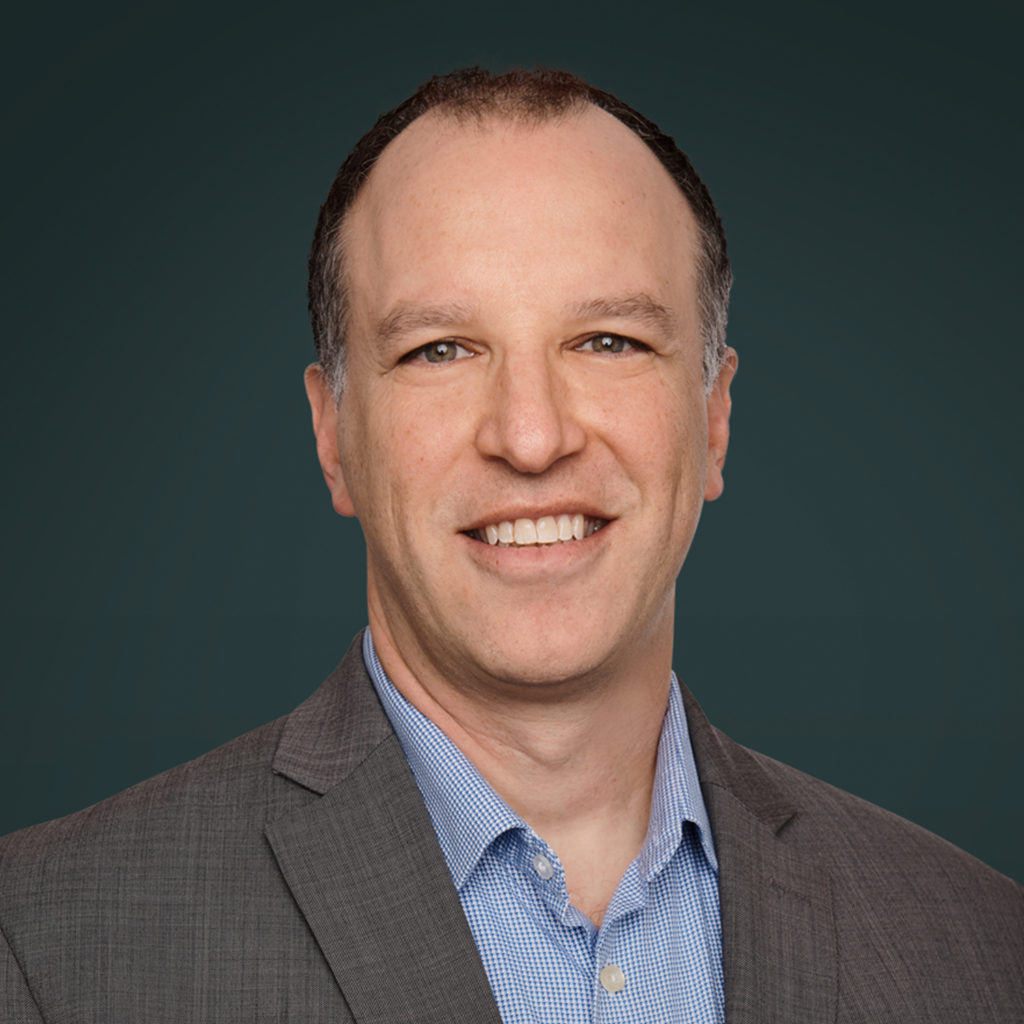Mental disorders are complex and often underreported, but they are also ubiquitous, affecting people in every country across the globe. Mental Health Awareness Month is observed annually in May and World Mental Health Day is observed annually on Oct. 10 with the main objective of raising awareness of mental health issues around the world and mobilizing efforts in support of mental health.
As the world comes together to respond to COVID-19, it’s imperative that public health leaders recognize the toll the virus has had on mental health and implement policies and programs that support mental health and prevent and treat mental illness, without shame or stigma.
We sat down with Adam Karpati, Senior Vice President, Public Health Programs at Vital Strategies to learn more about his experience in the mental health sector, why mental health awareness is essential, especially during the COVID-19 pandemic, and what governments can do to support and invest in this area now and in the future.
“People frequently have challenges to their mental health, resulting from stress, loss, or trauma, and which are influenced by the various circumstances and environments in which they live – home, family, workplace, community, etc.”
What is “mental health?”
The term “mental health” encompasses a broad set of conditions and issues, and is often misunderstood – both because it’s complicated, but also because people with mental illness are often highly stigmatized. We think about it as two related but also quite different concepts:
First, mental illnesses, or mental disorders (plural, because there are many different types). These are clinical conditions that can be extremely debilitating, and for which we have treatments, albeit far from fully effective. The most common mental illnesses are depression and other mood disorders such as bipolar disorder; anxiety disorders such as post-traumatic stress disorder and generalized anxiety; and substance use disorders, including alcohol, stimulants, and opioids (substance use has significant non-clinical dimensions, of course, related to criminalization and other factors). Schizophrenia and other psychotic disorders are less common but can be quite disabling. In children, in addition to depression and anxiety disorders, leading conditions also include attention deficit-hyperactivity disorder and conduct disorders. Other mental disorders include dementias, such as Alzheimer’s Disease, and developmental/intellectual disabilities, such as autism and the effects of epilepsy.
A critical aspect of any mental illness is the severity of the condition. “Serious mental illness” refers to the circumstance when a person’s daily functioning – ability to work or be in school, social interactions and maintaining relationships, etc. – is significantly impeded.
Second, “mental health.” This is a broad concept that denotes psychological/emotional well-being. People frequently have challenges to their mental health, resulting from stress, loss, or trauma, and which are influenced by the various circumstances and environments in which they live – home, family, workplace, community, etc. Compromised emotional wellbeing may not reflect clinical mental illness but can be helped by bolstering coping mechanisms and emotional resilience.
“An additional point about helping people with mental illnesses that reflects an important aspect of health care in general: a successful system of treatment and support needs to thoroughly combine clinical treatment and social supports.”
Why is it important to define both mental illness and mental health?
I think it is important to consider both concepts, of mental illness and mental health, because stigma can go both ways: a sense that mental illnesses are manifestations of everyday life and reflect underlying psychological frailty rather than clinical disorders requiring treatment; and conversely that unless someone is suffering from a severe condition, that we should not be intentional about investing in and promoting mental health and psychological resilience.
An additional point about helping people with mental illnesses that reflects an important aspect of health care in general: a successful system of treatment and support needs to thoroughly combine clinical treatment and social supports. Medications and psychotherapy are important. But so are family supports, employment and education support, housing, and many other components of care. The social consequences of mental illness are ubiquitous; for example, one of the most tragic yet frequent aspects of the onset of schizophrenia in young adults is behavior leading to arrest and incarceration. Job loss, school dropout, family rejection, and homelessness are all too common among people with serious mental illnesses.
“These findings point to the need for jurisdictions to develop robust strategies to prevent and address childhood trauma, and to identify and intervene in mental illness in its earliest stages, often in childhood, adolescence, and young adulthood.”
Prior to joining Vital Strategies, you spent 14 years with New York City Department of Health and Mental Hygiene, most recently as Executive Deputy Commissioner for the Division of Mental Hygiene. What were key lessons you learned for addressing mental health at the city level, and for such a large population with diverse needs?
Traditionally, mental health/mental illness has been treated as a special, separate dimension of health care; moreover, it really has not featured prominently in public health practice. A unique advantage in New York City is that the charter and mandate of its Health Department explicitly includes “mental hygiene” (“hygiene” is Latin for “health”); this highlights the importance of putting a public health lens on these issues. One manifestation of a public health approach is recognition and response to the finding that a substantial proportion of mental illness is preventable. And that early child development – in particular, exposure to Adverse Childhood Experiences (ACEs) such as trauma and toxic stress, can result in worse mental health and incident mental illness later in life. A related concept that also has policy and practice implications is that for some mental illnesses, such as schizophrenia, the earlier they are diagnosed and treated, the better the outcomes. These findings point to the need for jurisdictions to develop robust strategies to prevent and address childhood trauma, and to identify and intervene in mental illness in its earliest stages, often in childhood, adolescence, and young adulthood.
Social and environmental factors can also powerfully influence mental illness, just as they do mental health more broadly. As with many other dimensions of public health, behaviors that may on the surface appear to be driven solely by individual decision-making are shaped by the social, commercial, cultural, and physical environments in which people live.
Recognizing the contextual determinants of health – meaning external factors such as the social, economic, and physical environments — leads us toward interventions focusing not only on individual behavior choices but directly on those environmental factors. Suicide is a dramatic case of contextual influence on individual decisions. A strong determinant of a community’s suicide rate in the United States, for example, is the availability of firearms – more guns lead to more suicides. Similarly, in India, pesticide availability is an important driver of suicide through intentional ingestion; as such, regulatory restrictions on pesticide availability can be effective deterrents. In general, “means restriction” – i.e., reducing access to lethal tools – has been demonstrated to reduce suicides, and should be part of any comprehensive approach to suicide prevention, along with expansion of access to clinical services.
“Promising and exciting models of expanding care delivered by community health workers are spreading in many countries.”
Before the COVID-19 pandemic, what was a major barrier for governments to implement mental health services?
A major challenge is creating and “knitting together” a comprehensive mental health service system: integrating diagnosis and treatment of mild-to-moderate mental illnesses into primary care; and building a multi-dimensional system of care and support for serious mental illnesses that address all the issues mentioned above.
In wealthy countries, this means financing and access to services, service integration, etc. In low-income countries, the availability of specialized mental health care (social workers, psychiatrists, etc.) is often highly limited, and almost all care is in the primary care and public health system. Promising and exciting models of expanding care delivered by community health workers are spreading in many countries.
“The burden of untreated or undertreated mental illness is higher in Black, Indigenous and People of Color (BIPOC) communities, who are suffering disproportionately from COVID-19.”
How has COVID-19 changed the mental health landscape?
COVID-19 has changed the landscape on multiple levels: obviously, the stress of the pandemic is having a major impact on everyone. For many people, the stress is particularly magnified: health care workers overwhelmed by the sheer volume of work, the pain of dealing with death on such a massive scale, and fears for their own safety and that of their families. Essential workers facing similar fears just by going to work every day. Families losing their loved ones, often made even more tragic by not being able to be with them. Millions of people losing their jobs and livelihoods. Children losing opportunities for social development and processing their own fears and the stress of the adults around them. The global psychological impact of the pandemic is immeasurable.
Furthermore, systems of care and support have been disrupted by the implementation of public health and social measures. Many models of mental illness treatment are based on in-person individual or group psychotherapy/counselling, which have been interrupted. Beds in hospitals have been needed for COVID-19 care. Congregate living facilities have experienced significant outbreaks.
The prevalence of noncommunicable diseases and conditions like obesity are more prevalent in individuals with mental illnesses than in the general population; as such they are at higher risk of complications from COVID-19. The burden of untreated or undertreated mental illness is higher in Black, Indigenous and People of Color (BIPOC) communities, who are suffering disproportionately from COVID-19. In the United States, communities of color typically have lower access to mental health care, do not receive evidence-based treatments at the same rates of white populations, suffer poorer clinical outcomes, and experience worse social consequences. The compelling need to focus action toward BIPOC communities is highlighted by the interactions between the disproportionate burdens of both COVID-19 and mental health risks.
Amid the challenges and the tragedies of the pandemic, there are some positive effects on mental health care – the need to adapt to remote clinical care is prompting rapid development of telemedicine models that will ultimately be transformative in increasing access to mental health services.
“There are models of mental health crisis response that center public health, rather than law enforcement, such as mobile crisis services, in which immediate response teams are composed of specially trained mental health professionals. These need to be funded, implemented, and scaled across the country.”
How have the events in the United States involving police violence toward Black individuals changed the mental health landscape?
The issue of police interactions with people with serious mental illness who are in crisis is longstanding. It is a history of often tragic, yet potentially preventable outcomes, as exemplified by the recent events in Rochester, NY, involving the police killing of Daniel Prude. There are models of mental health crisis response that center public health, rather than law enforcement, such as mobile crisis services, in which immediate response teams are composed of specially trained mental health professionals. These need to be funded, implemented, and scaled across the country. The rethinking of the role and conduct of police that have been elevated by the Black Lives Matter movement is an opportunity to advance these essential changes.
To access resources on mental illnesses and health, please visit: https://www.who.int/news-room/feature-stories/mental-well-being-resources-for-the-public
Dr. Adam Karpati is Senior Vice President of Public Health Programs at Vital Strategies where he leads a team working to increase and improve the collection and use of health data and the development and promotion of policies and programmatic work to address threats to public health. To learn more about our work, visit: https://www.vitalstrategies.org/programs

